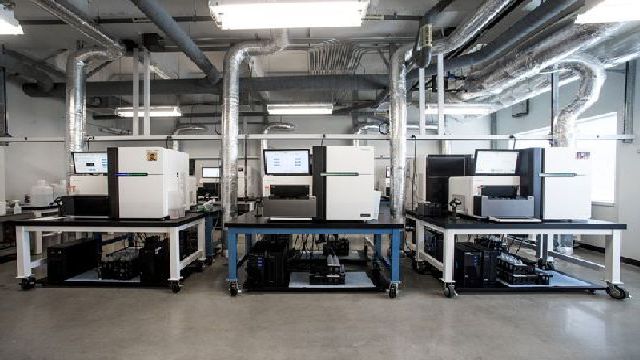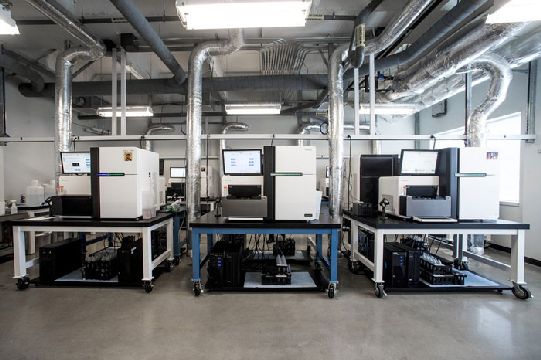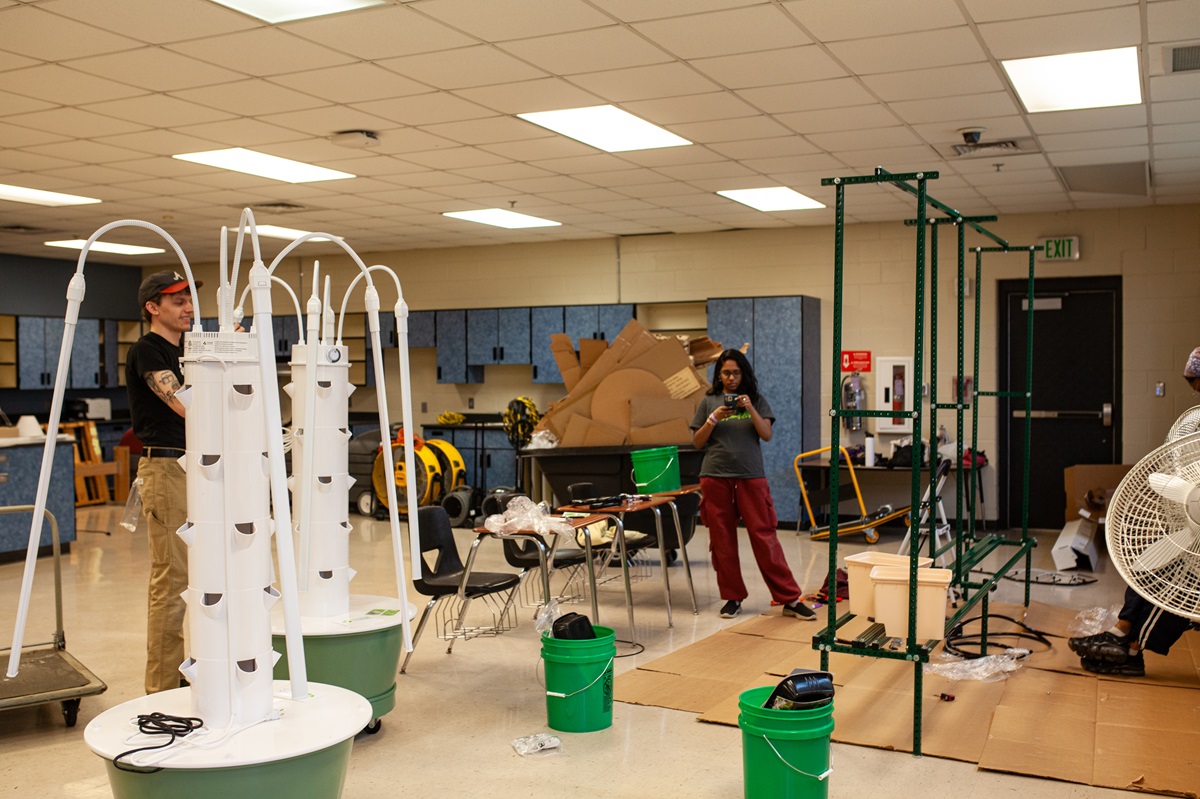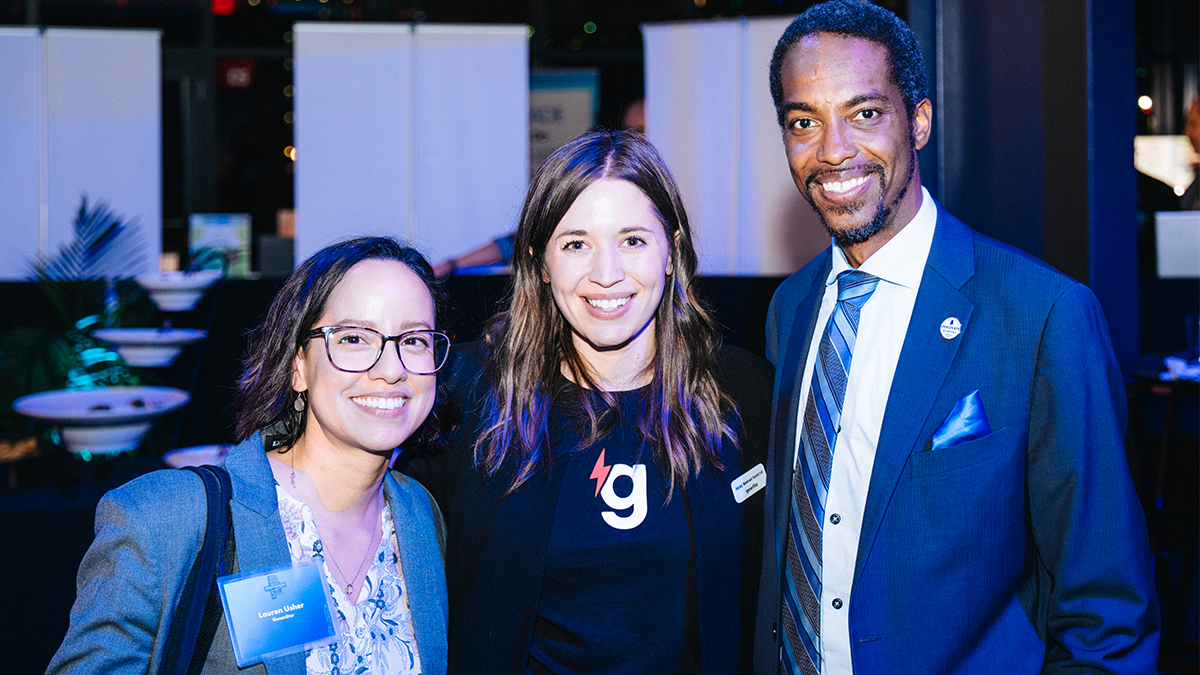Big Epidemiology: Detective work with millions of lives at stake

A strong research relationship with Huntsville's HudsonAlpha gives UAB Cancer Center investigators access to one of the world's leading gene sequencing facilities.
Everyone knows someone who has battled cancer. The assault on the disease at UAB is happening on many fronts, from petri dishes to population studies that span the globe. We will feature a special wellness series this week by Matt Windsor, taking a look at how this institution is fighting back against the ravaging effects of cancer at home and abroad.

Dr. Elizabeth E. Brown, molecular and genetic epidemiologist, is a professor in the UAB School of Medicine’s Division of Molecular and Cellular Pathology.
You can’t feel multiple myeloma in your bones. At least, not until it’s too late. The disease begins in the bone marrow, when immune cells known as plasma cells start to grow out of control. Plasma cells make antibodies — the tags that the immune system needs to recognize invaders, or cancer.
Exponential growth from plasma cells eventually crowds out normal, oxygen-carrying red blood cells, causing patients to become easily fatigued. Their bones become weak and brittle. Infections become more common. Median survival is around 4.5 years.
Digging into the data
To answer those questions, you need to learn a lot of things about a lot of patients: sequence their genes; examine their blood; gather medical histories, reproductive histories, and residential histories; find out if they have been exposed to environmental toxins. Somewhere, buried in that mountain of data, you may be able to find the key — a pattern that would explain why blacks, and males, are at higher risk. Then you could zero in on high-risk patients, and design a test to allow earlier diagnosis, or a new kind of treatment.
The people who do the digging are molecular and genetic epidemiologists, such as Elizabeth E. Brown, Ph.D., MPH. Brown is a professor in the UAB School of Medicine’s Division of Molecular and Cellular Pathology. In 2015, she was named co-leader of the Cancer Control and Population Sciences Program in the UAB Comprehensive Cancer Center. The program is expanding its focus to include “the discovery of biomarkers from across the cancer continuum and to work seamlessly across the other Cancer Center programs in order to facilitate a more rapid translation of findings from the laboratory to the bench and ultimately to our clinics,” Brown said.
Brown and her colleagues use innovations such as high-throughput gene sequencing and data mining software to find genes and environmental factors that contribute to disease. “I can imagine a world where doctors can predict your risk of cancer, as well as how you will respond to cancer treatment, using a tiny drop of your blood,” Brown said.
That goal is already a reality for several types of cancer, she explains. Molecular and genetic epidemiology studies identified the BRCA1/BRCA2 gene and the molecule HER2/neu, which are now used daily “to screen for and treat breast cancer,” Brown said. The molecule CA125 is used to predict the development of ovarian cancer. And clinicians test for the presence of human papilloma virus (HPV) types 16 and 18 to screen for cervical cancer. Other studies have found gene variants that can tell clinicians which drugs are likely to be most effective in individual patients.
“I can imagine a world where doctors can predict your risk of cancer, as well as how you will respond to cancer treatment, using a tiny drop of your blood.”
Investigating a “unique cancer”
Brown has focused on multiple myeloma, which is, she said, a “unique cancer.” That is because it has two precursor conditions that are “necessary but not sufficient.” The first is an asymptomatic disorder called monoclonal gammopathy of undetermined significance, or MGUS. With MGUS, aberrant plasma cells make lots of copies of a single antibody, but they aren’t yet having a large impact on production of red blood cells. MGUS “carries a risk of progression to multiple myeloma of around 1 percent per year,” Brown said. Following that is an intermediate condition, smoldering myeloma, characterized by an increased number of plasma cells – and antibodies – but few if any physical symptoms. Smoldering myeloma brings a risk of progression to multiple myeloma of 10 percent per year. “High-risk MGUS patients have a 58 percent absolute risk of developing multiple myeloma over a 20-year period,” Brown said. That makes myeloma an “ideal model for characterizing powerful biomarkers of disease susceptibility and progression.”

A strong research relationship with Huntsville’s HudsonAlpha gives UAB Cancer Center investigators access to one of the world’s leading gene sequencing facilities.
Brown and colleagues are looking for biological patterns unique to high-risk MGUS patients in order to change screening practices and how these patients are managed over time. Brown, who is a former chair of the International Multiple Myeloma Consortium, plays a leading role in the Molecular and Genetic Epidemiology (iMAGE) study of multiple myeloma, which is collecting thousands of samples from blacks and whites at UAB and elsewhere to try to characterize molecular signatures of high-risk disease and to understand the ethnic differences in disease prevalence.
“We’re in the clinic [at the Cancer Center] every day there is a myeloma patient there,” Brown said. The vast majority of these patients, up to 90 percent, agree to take part in the study, she noted; the researchers have now enrolled some 1,600 myeloma patients, making this the largest study of myeloma that includes a diverse population in the world. But sequencing the genomes of all these patients is a technically comprehensive proposition. It would be cost-prohibitive, too, if it were not for an invaluable partnership with one of the world’s most advanced genetic research centers, just up the road in Huntsville.
“Partnerships between investigators at UAB and HudsonAlpha make us uniquely well-poised to translate new findings and technology to local research studies and populations in order to improve the health and well-being of Alabama residents and beyond.”
High-tech research alliance
In 2014, the Cancer Center established a research consortium with the HudsonAlpha Institute for Biotechnology, led by the superstar genetics researcher Richard Myers, Ph.D., who was a key player in the Human Genome Project. The agreement has catalyzed collaborations between cutting-edge investigators at both institutions. Brown has five ongoing projects with HudsonAlpha. She is working with Myers on a project to sequence the repertoire of immune cells present in patients with multiple myeloma, for instance. Brown and HudsonAlpha’s Shawn Levy, Ph.D., are also investigating the role of microRNAs in multiple myeloma. “These are small, non-coding RNAs that play a critical role in tumor biology by regulating cell-cell communication,” Brown said. Tumors overproduce these intracellular messages, making them a potential biomarker for diagnosis or disease progression.
A strong research relationship with Huntsville’s HudsonAlpha gives UAB Cancer Center investigators access to one of the world’s leading gene sequencing facilities.
“Partnerships between investigators at UAB and HudsonAlpha make us uniquely well-poised to translate new findings and technology to local research studies and populations in order to improve the health and well-being of Alabama residents and beyond,” Brown said.
Brown was working at the National Cancer Institute when researchers successfully advanced the vaccine against most strains of human papillomavirus responsible for causing cervical cancer. This vaccine is predicted to save tens of thousands of lives in the United States alone. “That was a huge win for molecular epidemiology,” Brown said. Many more could be around the corner. Several recent recruits to UAB and the Cancer Center have an interest in molecular and genetic epidemiology, Brown noted, including Laura Rogers, M.D., MPH, who is “doing a lot of intervention work with energy balance and breast cancer survivorship.”
When Brown was training in genetic and molecular epidemiology at Johns Hopkins University, it became clear that epidemiology studies have the potential to “save millions at a time,” she said. “And that’s right. Biomarker discovery is such a great way to achieve that goal. There is potential to make a huge clinical impact, and UAB is really an ideal place to do that.”
Monday: UAB fight against cancer happening across many fronts.
Wednesday: Patient Care Connect Program provides cancer answers patients need.
Thursday: How a superstar surgeon can make a difference.
Friday: The economic impact of cancer research.





